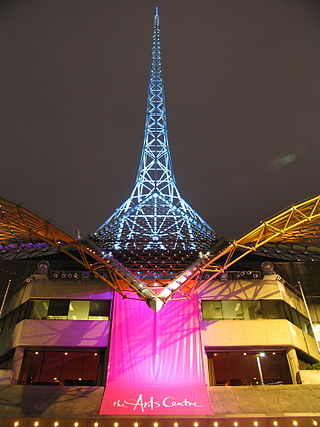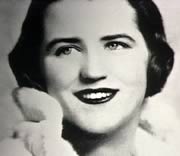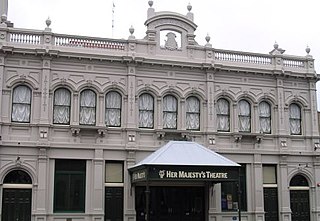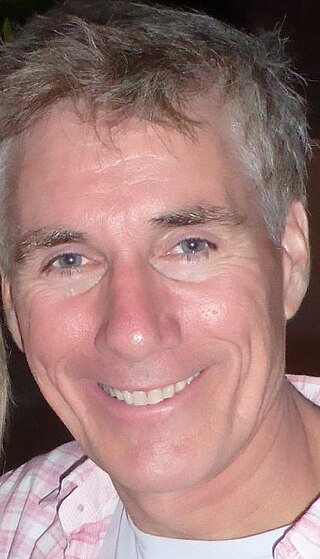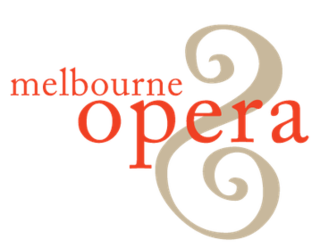Victoria State Opera 1976–1995

In 1976 the new chairman John Day added the word 'State' to its title to become Victoria State Opera. He is quoted in The Age on 29 July 1976, saying that the new title had "more prestige" and "a more official cachet." He stated further that, "The State Opera would not seek to emulate the lavishness of Australian Opera Company productions." It would concentrate on attracting younger audiences with modern and experimental productions combining opera with music and drama.
The subsidy from the Victorian State Government in 1975 was AUD165,000. In 1976 the VSO sought an increase to AUD$280,000 with an unchanged Federal Government subsidy of AUD56,000.
The first production under the new banner was Gluck's Orfeo and Eurydice , starring Margaret Field, which opened at the National Theatre, St Kilda on 30 July 1976.
Significant appointments in these early years include:
- Ken Mackenzie-Forbes who joined the company as general manager in 1976. [7] Ken Mackenzie-Forbes was Chief Executive from 1976 until 1995.
- Jeffrey Sher QC became chairman from 1979 to 1982 [8]
- Sir Rupert Hamer AC KCMG ED was chairman from 1982 to 1995 [9] [ circular reference ]
In 1977 Robin Lovejoy was appointed Artistic Advisor to the Victoria State Opera. [10] VSO productions he directed include:
- Monteverdi's L'Orfeo (1977) Princess Theatre, Melbourne
- Debussy's Pelléas et Mélisande (1977) Princess Theatre, Melbourne
- Mozart's Idomeneo , designed by John Truscott, starring Australian tenor, Ronald Dowd (1978) Princess Theatre, Melbourne [11]
- Bizet's The Pearl Fishers , John Truscott (1979) Princess Theatre, Melbourne
- Monteverdi's The Return of Ulysses (1980) Princess Theatre, Melbourne
- Johann Strauss' Die Fledermaus , for which he also adapted the dialogue (1981) [10]
In 1982 Sir Rupert Hamer, the former premier of Victoria, became Chairman of the Victoria State Opera and was to remain in this position until 1995. It was a fitting appointment as Sir Rupert had been a vigorous supporter of the building of the Arts Centre Melbourne complex. From 1984 the company performed in the newly built State Theatre, part of the Arts Centre Melbourne, where it presented at least four to five operas a year over two seasons, which eventually rivalled those of the Australian Opera given in the same space. At its height, the VSO had over 13,000 season subscribers. [1] [12] In 1985 Brian Stacey was appointed as Head of Music. [13]
Other notable production highlights include appearances by Suzanne Steele, most notably in the lead role of La belle Hélène and as Eurydice in Orpheus in the Underworld . There were also Don Giovanni , Tannhäuser , The Pearl Fishers (which toured to Sydney), The Tales of Hoffmann , Faust , Aida , Il trovatore , The Barber of Seville , The Magic Flute , Andrea Chénier , Turandot , Madama Butterfly (the traditional production by Andrew Sinclair or the Ken Russell production in 1986, as part of the Spoleto Festival) [14] and a production of Lohengrin produced by August Everding. [12] Acknowledging their Gilbert and Sullivan heritage, 1995 saw Rhonda Burchmore star in a production of Ruddigore at the State Theatre, now named Hamer Hall. [15]
As the VSO designed their productions for the State Theatre, a 2077-seat theatre with one of the largest stages in the world, [16] they were able to make full use of the facilities i.e. revolving stage, hydraulic stages and were able to create imaginative and exciting effects in their productions. Their first opera in the State Theatre was the new John Copley production of Verdi's Don Carlos in 1984. [17] The curtains remained open during set changes so the audience could marvel at the machinery.

